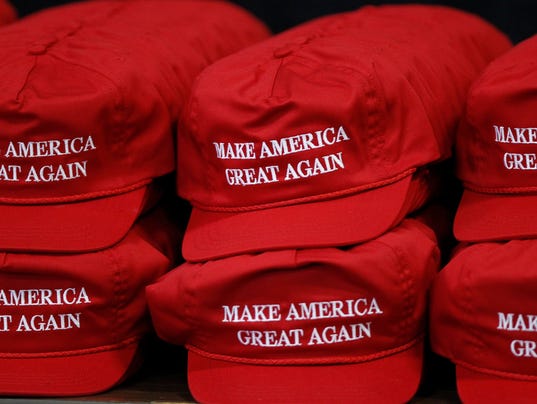Why Donald Trump will fail to bring back factory j
Post# of 65629
Quote:
Why Donald Trump will fail to bring back factory jobs
Huh, who knew? Shit's changed up a bunch since back in the day.
A real businessman KNOWS about this. A con man? Not so much.
OOPPS!
Brent Snavely and Chrissie Thompson, Detroit Free Press and Cincinnati Enquirer 2:08 a.m. EDT November 4, 2016

(Photo: J.D. Pooley, Getty Images)
Bring back jobs.
It’s a message Donald Trump has trumpeted in his presidential campaign and one that resonates with working-class voters across the country.
The reality is more complicated: Manufacturing jobs haven’t disappeared just because of trade deals and imports and foreign tariffs. Today’s manufacturers use everything from robots to product-tracking systems to trim costs and increase efficiency and quality. That often means fewer jobs than companies needed to do the same work years ago.
“Even if manufacturing exploded, there’s no reason to suppose that the new factories would look anything like the ones even from 2005,” said Michael Hicks, an economist at Ball State University in Muncie, Ind.
Take the J.M. Smucker jam plant in Orrville, Ohio. In 2012, the company replaced a 60-year-old factory with a new one, but the facility does the same work with 30% fewer employees due to “new technologies and efficiency improvements.”
It reportedly trimmed its workforce from 425 to 300 using a retirement incentive and by not refilling positions when people left the company.
In Kokomo, Ind., auto electronics supplier Delphi once employed thousands. As part of the company’s four-year bankruptcy in the mid-2000s, General Motors took over Delphi’s Kokomo manufacturing, which now employs around 750.
But the company’s automotive division opened a new plant in Kokomo, where a couple hundred workers assemble electronic components.
In fact, American workers do assemble electronics — that work is not all overseas. But it looks different, and it must to compete in a global economy.
“This really is the new manufacturing. The old days of beating and banging are gone,” said Rob Devota, process technology manager at Magna Electronics.
In fact, 80% to 90% of the manufacturing jobs lost in the U.S. since the peak in 1977 have been because of productivity gains —- not because of trade deals, Hicks said.
Much of the efficiency at today’s factories comes from lower-cost power supplies and ways to track and manage the inventory from the moment it comes off the production line until the time when it goes to the customer.
Industries known for “beating and banging” have become more efficient, too.
Trump has wooed steelworkers near Pittsburgh by saying he plans to bring steel jobs back to the region. But that’s just not possible, said Frank Giarratani, an economist who recently retired from the University of Pittsburgh.
When Pittsburgh’s iron-ore-based steel mills were closing in the 1980s and 1990s, new plants were opening elsewhere in the country, in locations with nonunion workers, low-cost electricity, and fast-growing populations that needed new buildings, such as the Midwest, South and Southeast.
Those newer factories make steel differently. A majority of steel made in the U.S. today is recycled — melting down existing steel to form it into new metal. Recycling plants are highly automated and need hundreds of employees, but not thousands as at ore-based steel plants in the 1970s, Giarratani said.
The best way for the president to encourage the growth of new steel plants? “If the economy were growing — ” and rapidly — “we would build more,” he said.
 (2)
(2) (0)
(0)